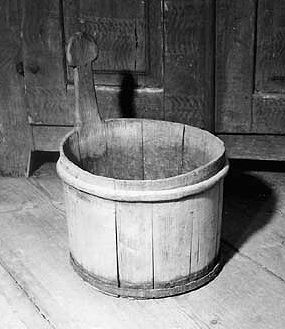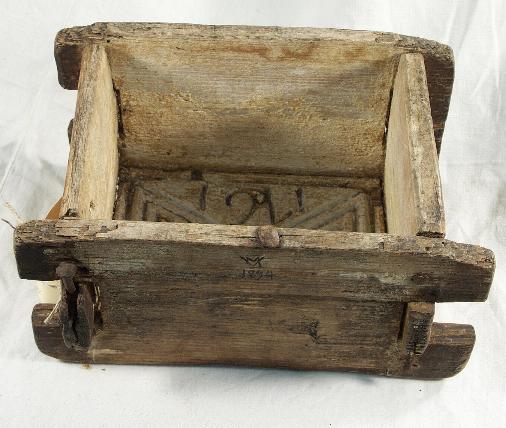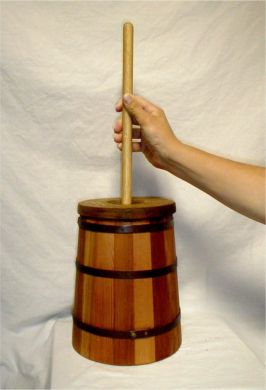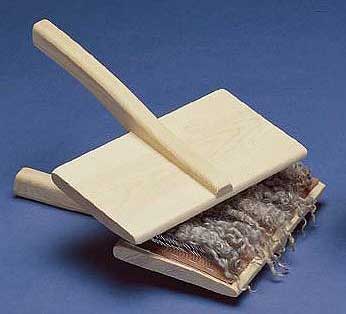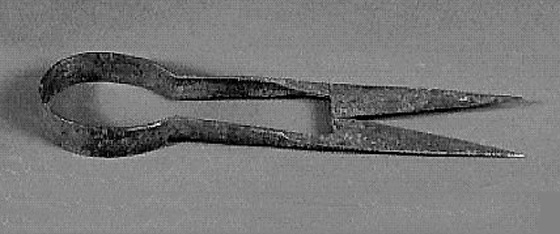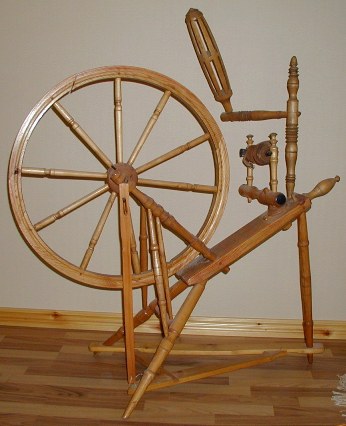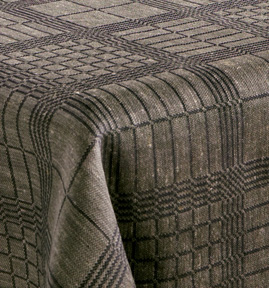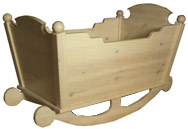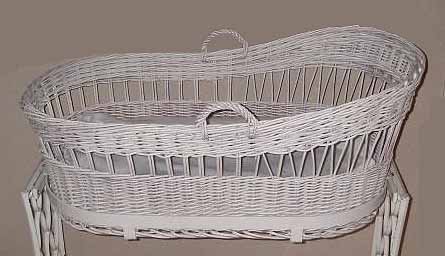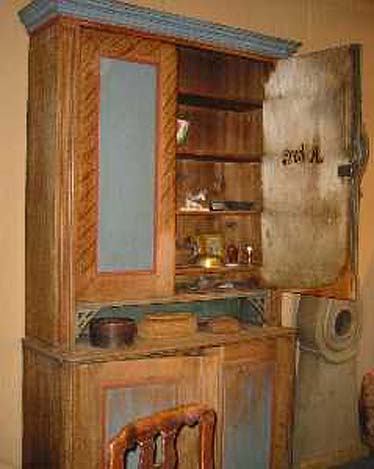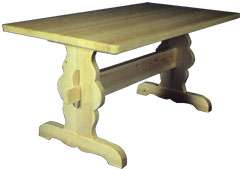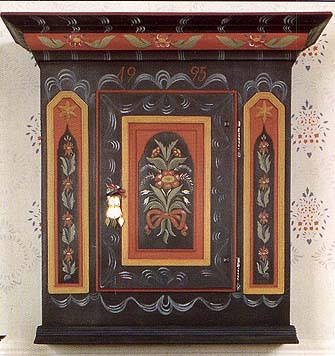INTERVIEW WITH THE WIDOW - 2
(Continued from part 1)
Me: Sven had lots of clothing, but some of it is in pretty bad shape.
CP: Sven would wear things until they fell off his back. Around home this was all right, but one day he wanted to wear a shirt with a hole in it to church. I stuck my finger in that hole and started ripping it. The kids joined in and we all had a good laugh. Sven wasn’t too happy about it, but he took out a whole shirt to wear! Sometimes torn clothing “got lost” in the laundry.
Me: I’m impressed that there is quite a selection of animal skins and items made of skins.
CP: My goodness, yes! Of course we had hides from the farm animals, but you may have seen that Sven had a shotgun. Whenever he killed anything he would save the hide and tan it. So you see items made from the skin of wolf and ferret, as well as sheepskin, kidskin, calfskin, and leather. If he could figure out how to tan it, he would have saved fish skin as well.
Me: You mention farm animals – the list includes cows, pigs, sheep, goats, and chickens. Were any of these pets or just meat, milk, and eggs?
CP: Well, Sven and I tried very hard not to get attached, but the kids did have favorites and I admit that I did also. It was always difficult when it came time to slaughter. Chickens were the easiest – they have no personality. Then pigs, goats and sheep were a little harder, but the most difficult were the cows. They almost became part of the family. We always took them to the butcher for slaughter so we wouldn’t have to see the death. I am particularly fond of the cow we named Hvithufva! I expect to take Hvithufva as part of my tjugonde penning, uh, the widow’s five percent of the estate.
Me: There are many items on the Miscellaneous list that support milk, cheese, and butter production. Was this just for the family or did you sell some of it?
CP: We used most of it ourselves, but once in a while when all of the cows were fresh at the same time, we had to sell some of the milk. It’s amazing how much food growing children need, especially in the winter when they need more just to keep warm!
|
|
|
|
Me: We already discussed homespun, but now I have another question. The estate includes cards for wool, a spinning wheel, a large loom, a ribbon loom, and a quilting frame. I presume Sven didn’t use these – when did you find time to use them?
CP: Well, sir, I don’t know how you make a living, but when people are on their own trying to raise a family and put food on the table and clothes on their backs, every waking hour is occupied. After dinner, especially in the wintertime, some of the children would clean up and I would spin, sew or weave. I actually found it relaxing and rewarding.
|
karda (carding combs)
fårsax (sheep shears) spinnrock (spinning wheel) > |
|
Me: Your clothing is not listed in the inventory.
CP: No, the venerable court graciously allows the widow to keep her clothing and certain personal items. They also allow children of the deceased and other family to keep their things.
Me: It has been four years since your youngest child, Catharina, was born, but I see a basket bed and a cradle in the listing. Did you expect more children?
CP: I never “expected” more, but you can’t be too careful. Since the twins were born in ’82, I realize anything can happen! Now, there are the grandchildren. As you can see, Sven’s new baby, Petter is in the cradle right now! I’ve also kept the Christening clothes for the same reason.
Me: So you had twins? I’ve seen the kids running around but haven’t recognized twins.
CP: Christina, the 13-year-old lunk over there rocking baby Petter, had a twin brother, but he only survived a few months. Twin births are very difficult. We are fortunate that Christina survived. She was much larger and healthier at birth.
|
|
|
Me: Lars has a guardian and some special amounts of money laid aside for him. Can you tell me a bit more about his special status?
CP: Yes, Lars is special. The church records list him as enfaldigt, which is literally foolish. I’m not sure what his medical condition is, but he is very slow. When Sven and I married, Lars was nine years old, but he was quite behind his brother Hindric who was only seven, in terms of speech, getting along with his siblings and taking care of himself. He eventually learned enough to get along and even to be some help in the garden and on fishing trips, but he is always sickly and weak. I worry about his future. I’m glad Sven made special provision for him.
Me: There is also a special provision for the minor girls. Will you tell me about that?
CP: Sven’s will provides some cash to cover the marriages of the three minor girls, since the bride’s family is expected to pay wedding expenses. It will be held by the guardian Nils Nilsson for that purpose.
Me: And the rest of the available cash?
CP: Sven’s will provides a morgongåva for me and that was taken out of available cash. After that……..
Me: Excuse me Christina – what is the morgongåva?
CP: The “morning gift” is like an insurance policy for the wife. Children are supposed to take care of the old folks, but if a couple have no children and her husband dies first, she needs the resources to care for herself. The morning gift is a promise made by the groom to his bride of a sum of money to be paid to her upon his death.
After that sum was taken from the available cash, one-third of the balance goes to the widow, and the remainder goes to the children, with sons getting a full share and daughters getting a half share.
Me: Your house is full of furniture and furnishings. I see lots of sofas, tables, chairs, stools, cupboards, beds, and paintings. What will become of all of these?
CP: Sven’s son Sven married in ’93 and he has been living at home with his wife and child. I expect that he will take over the house, farm, and milling business. There will also be further division of the estate items between all of the heirs.
|
|
< skänkskåp (sideboard cabinet) |
|
Me: The books listed include a Bible, a Psalm Book, and the Adami Sabbath Book. I take it you folks are good Christians.
CP: We don’t attend church as often as we should, but I have made sure the children get the basics of Christianity. We often read the Bible in the evenings and we observe many of the holidays as listed in Adami’s book. The Bible also contains a record of births, marriages and deaths in the family.
Every year, someone from the church comes by for the “clerical survey”. They examine each person for various abilities. I try to prepare the children for that examination and it helps me as well. Sven doesn’t actively participate when I work with the kids, but he sits and listens and usually does pretty well. I should say “did” – I’m having trouble accepting that he is gone.
Me: I’d like to add for those not familiar with the practice that the clerk keeps a big ledger for the parish and records the names of each person in each family with his or her personal information. This includes things like birth date and place, smallpox vaccination status, ability to read and write, level of Christian knowledge, dates of entering and exiting parish if that happened, marriages and deaths when they happen, and sometimes even comments about handicaps or personal conduct. These husförhörslängder are usually supplemented by separate ledgers for recording births and Christenings, banns and marriages, and deaths and burials.
Christina, you are certainly an intelligent and interesting person. How do you feel about recent activities in the monarchy?
CP: Oy-oy-oy-oy – I’ll tell you I was worried when King Gustav III was trying to fight the Russians! I could just imagine him raiding the countryside for young men to help in the fight. And he was such a spendthrift – he would take money from poor folks like us for his own personal frivolities! I wasn’t very sorry in ’92 when they shot him.
Me: And do you get any news of events in other countries?
CP: There are rumors in church about a small number of English colonists in a new land across the ocean who have broken ties with England and are seeking settlers. I suppose as adventurous youngsters hear of this they will start leaving Sweden to find their fortunes.
Me: Well, thank you very much for your time, Christina! I have enjoyed talking with you and I wish you all the best for your future!
NOTE FROM THE AUTHOR
The facts in this report are real, taken from the actual bouppteckning of Sven Larsson and the clerical records. The responses by Christina Pehrsdotter are obviously speculative. A few responses are based on my maternal grandmother who was one of those “adventurous youngsters” who migrated to the United States from Sweden in 1891. I can still hear her saying “Oy-oy-oy-oy” when I would spill something, or remarking about “butter melting in their mouth” regarding my grandfather, in her delightful accent. She had ten children, nine of whom lived to 72 or more years old.
Sven Larsson and Christina Pehrsdotter were two of my fourth great grandparents.
You can see the actual bouppteckning that this information was taken from here and you can see more than 500 Swedish object words with pictures and their English translations here.
